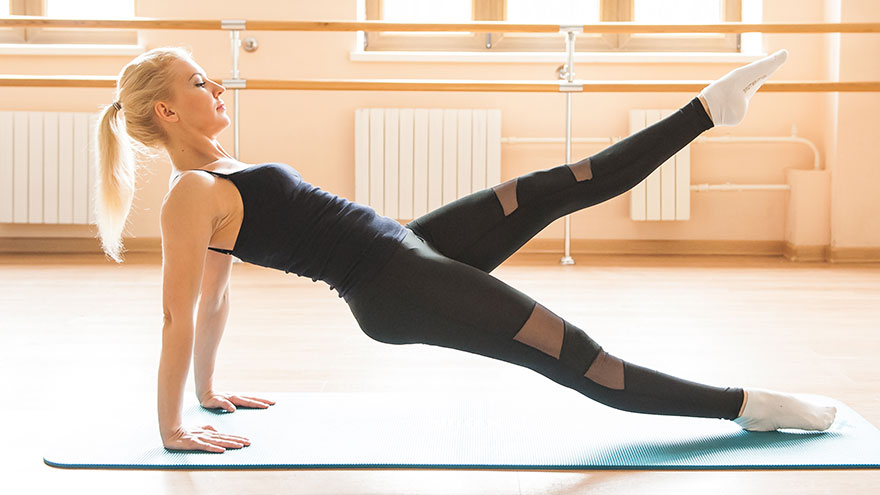Pilates for Serratus Anterior
The serratus anterior, located on either side of your chest alongside your ribcage, attaches to your shoulder and stabilizes your scapulae, enabling you to raise your shoulders and rotate your scapulae. Excessive protrusion of the shoulder blades is a result of a weak serratus anterior. Pushups and planks are the most apparent exercises where protrusion occurs and mastering them in correct form will strengthen this area. A well-rounded Pilates program should include at least two or three exercises targeting this muscle.

Powering the Pushup
Though pushups are not usually associated with Pilates, they are in fact used in a number of variations. Starting on your knees, walk your palms out until your body forms a straight line from your crown to your tailbone. Keeping your shoulders over your wrists, lower down by bending at your elbows and leading with your chest. Draw your navel up and in, and hollow out your shoulders by broadening them across your upper back. Press back up to start and repeat eight times. Pushups on your knees will help you to maintain your form while building strength; progress to your toes once you become comfortable.
The Straight Line on Planking
Holding a plank in correct form is a gateway to several traditional Pilates exercises that strengthen the serratus anterior. Start with your forearms parallel or elbows turned out, hands clasped. Extend your legs long and keep them about hip-distance apart, resting on your toes. Keep your tailbone tucked and your abdominals pulled in. Your body should form one straight line. Widen your upper back, hollowing out your shoulders as you extend through your head. Hold for 30 seconds.
Down Stretching for Strength
The Down Stretch is a Pilates exercise performed on a reformer, a piece of equipment with a sliding carriage atop a strong base utilizing springs for varying resistance. Shoulder rests and an adjustable foot bar round out the machine’s specifications. Kneel on the carriage with your arms shoulder-width apart, elbows extended and hands gripping the foot bar. Keep heels in line with your sitting bones and place your feet against the shoulder rests. Dropping your hip bones toward the floor, push the carriage back while maintaining your spinal position. Widen the back and do not allow your scapulae to protrude. Return the carriage to start and repeat eight to 10 times.
The Long Stretch Home
The long stretch is an evolution of the plank; it’s performed on the reformer, adding movement to increase the challenge. Get into a plank position with hands on the foot bar and feet against the shoulder rests. Press into the heels of your hands and widen across your upper back. Reach long through the crown of your head and push the carriage back while maintaining a neutral spine. Return the carriage back bringing your face over the foot bar. Repeat eight to 10 times.
You Might Also Like :: How to Build a Plyo Box for Plyometric Exercises

